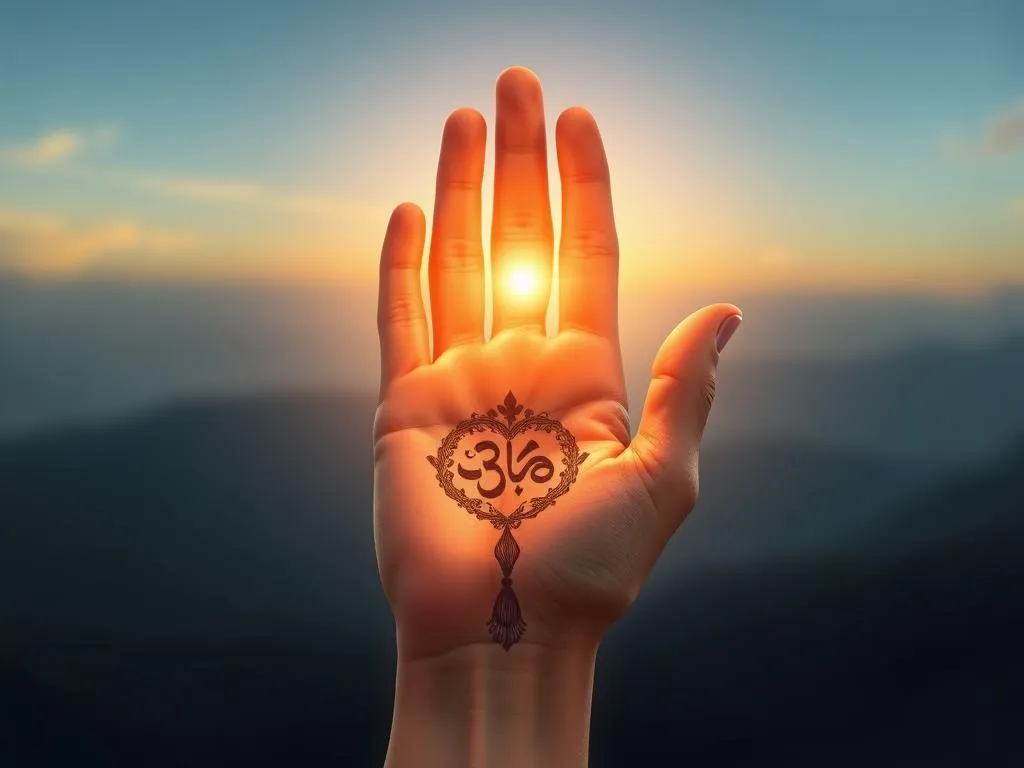
The hamsa hand spiritual meaning is rich with history and symbolism. This ancient talisman, often depicted as an open hand, carries deep significance in various cultures. Many people wear it as a protective charm, believing it can ward off negative energy and bring good fortune. In this blog post, we will dive into the fascinating layers of the hamsa hand’s meaning and how it can resonate with your spiritual journey.
Have you ever wondered why the hamsa hand is so popular? This symbol has transcended cultures and centuries, making it a beloved icon in spiritual practices today. From its protective qualities to its connection with divine blessings, the hamsa hand spiritual meaning speaks to the heart of many seekers. Join us as we explore how this enchanting symbol can inspire and uplift you in your daily life.
Key Takeaways
- The hamsa hand is a symbol of protection and blessings.
- It has roots in various cultures, including Hinduism, Islam, and Judaism.
- Wearing or displaying the hamsa can enhance your spiritual practice.
- The hamsa serves as a reminder to focus on positivity and love.
The Symbolism of the Hamsa Hand
The hamsa hand, often depicted with an eye in the center of the palm, is believed to provide protection from the evil eye. This concept of the evil eye is present in many cultures, where it represents envy and negative intentions directed at someone. The hamsa hand acts as a shield, offering a sense of safety and comfort to those who embrace its power.
In addition to protection, the hamsa hand spiritual meaning includes blessings and good fortune. It’s not just a physical symbol; it embodies hope and positivity. Many cultures view it as a sign that divine energy is present, guiding and protecting individuals on their life paths. Have you ever felt the need for protection or guidance? The hamsa hand might be the perfect symbol for you.
Cultural Significance of the Hamsa Hand
The hamsa hand is not confined to one culture; it has a rich tapestry of meanings across various religions. In Judaism, the hamsa is known as the “Hand of Miriam,” named after the sister of Moses. It symbolizes protection from harm and serves as a reminder of divine guidance. Many Jewish homes display the hamsa to invite blessings and ward off negativity.
In Islam, the hamsa is associated with the Prophet Muhammad and is believed to represent the five pillars of Islam. It signifies faith, prayer, charity, fasting, and pilgrimage. This connection reinforces the idea of spiritual protection and the importance of faith in everyday life.
Hinduism also embraces the hamsa symbol, where it is linked to the goddess Durga. Here, it represents strength and protection, encouraging followers to face challenges with courage. Isn’t it fascinating how one symbol can carry so many meanings across different cultures?
The Hamsa Hand as a Personal Talisman
Many people choose to wear the hamsa as a personal talisman. Whether in the form of jewelry, tattoos, or wall art, this symbol can serve as a daily reminder of protection and positivity. Imagine wearing a beautiful hamsa necklace that not only enhances your outfit but also connects you to a powerful spiritual symbol.
When you choose to wear or display a hamsa hand, you are inviting its energy into your life. This act can help you cultivate a sense of safety and encourage a positive mindset. Have you ever thought about how your surroundings influence your mood? The items you choose to keep close can play a significant role in your emotional well-being.
Using the Hamsa Hand in Meditation
Incorporating the hamsa hand into your meditation practice can deepen your spiritual journey. Imagine sitting quietly, focusing on your breath, and visualizing the hamsa hand enveloping you in a warm, protective light. This practice can help you release negative thoughts and invite positive energy into your life.
You might also consider placing a hamsa image in your meditation space. This way, you can draw on its protective qualities as you explore your inner self. As you meditate, ask yourself: “What do I need protection from?” or “How can I invite more blessings into my life?” These reflective questions can lead to profound insights.
The Hamsa Hand in Modern Spirituality
Today, the hamsa hand has found a place in modern spiritual practices. Many people are drawn to its beauty and meaning, incorporating it into their daily lives in various ways. Whether it’s through home decor, jewelry, or personal affirmations, the hamsa serves as a bridge between ancient wisdom and contemporary living.
In a world that often feels chaotic, the hamsa hand can remind you to stay grounded and focused on love and positivity. It encourages you to create a space of peace within yourself and your environment. How can you bring more harmony into your life through the symbolism of the hamsa?
Caring for Your Hamsa Hand Symbol
If you choose to incorporate the hamsa hand into your life, it’s important to care for it with intention. Whether it’s a piece of jewelry or a decorative item, treating it with respect can enhance its power. You might consider cleansing your hamsa regularly by using sage or sound to clear any negative energy it may absorb.
Additionally, setting intentions for your hamsa can amplify its spiritual significance. As you wear it or display it, take a moment to express gratitude for the protection and blessings it offers. This simple act can strengthen your connection to the symbol and deepen its impact on your life.
Conclusion
The hamsa hand spiritual meaning is a beautiful blend of protection, blessings, and positivity. As you explore this symbol, consider how it resonates with your personal journey. Whether you choose to wear it, display it, or incorporate it into your meditation practice, the hamsa hand can serve as a powerful reminder of the love and guidance available to you.
Embrace the hamsa hand as a source of strength and inspiration in your life. As you navigate the challenges and joys of your spiritual journey, let this ancient symbol be a beacon of hope and protection. Are you ready to invite the hamsa’s energy into your life?







